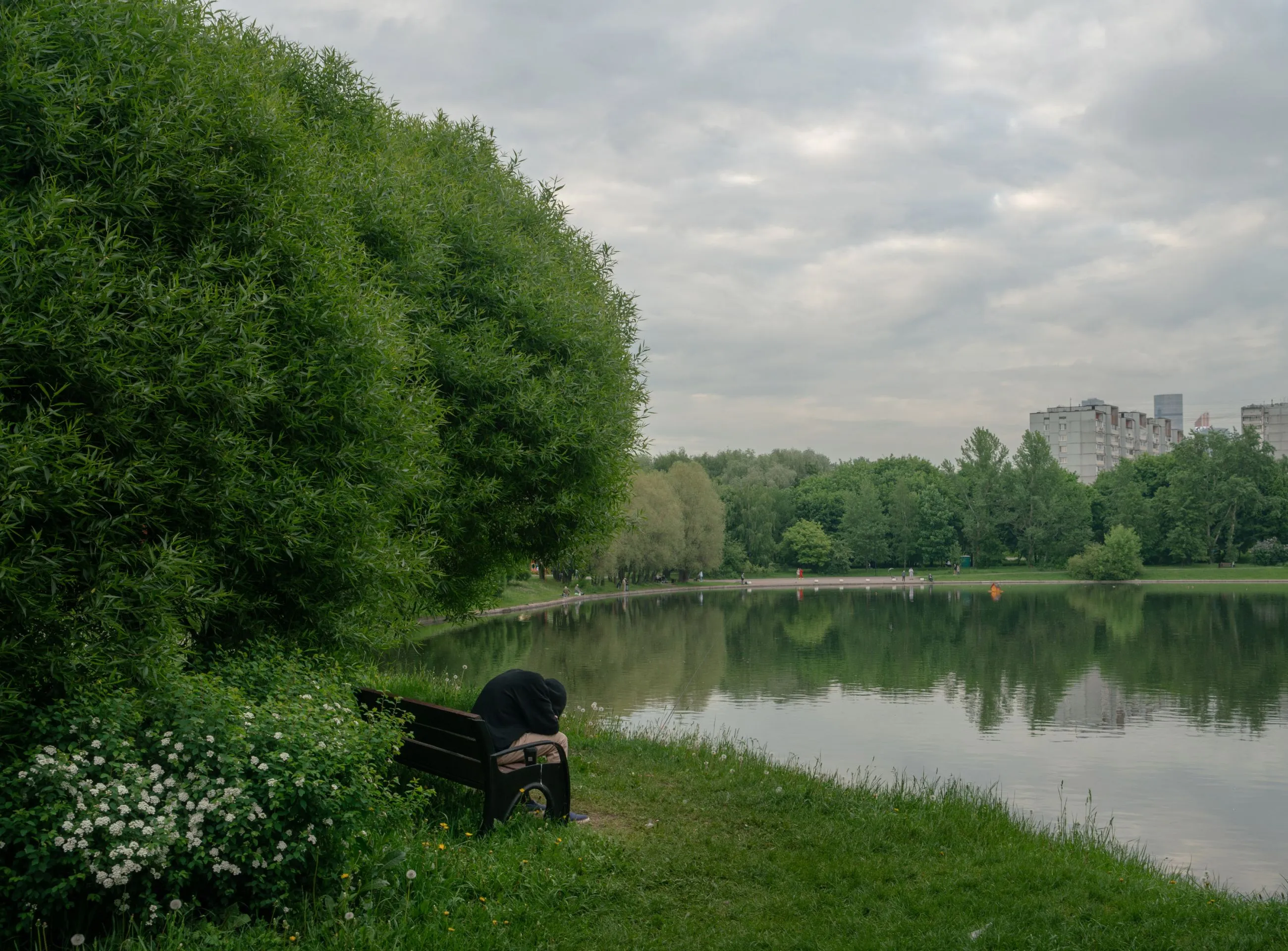Alexander Gronsky
Alexander Gronsky has been called the first Russian representative of deadpan — the deliberately “boring”, detached, dispassionate photography associated with the Dusseldorf School. Gronsky’s main genre is landscape; the typical environments of his photographs are the Moscow outskirts, wooded parks and residential areas built up with identical high-rise buildings. In one of his early projects, “Pastoral”, views of Moscow recalled classical landscape painting and, by association, seemed to become more attractive. The photographer showed that we see “beauty” where cultural habit tells us to.

Alexander Gronsky

Alexander Gronsky

Alexander Gronsky
Another important theme in Gronsky’s work, closely connected with the problematics of photography in general, deals with counterfeits, fakes and imitations. He has shot, for example, battle reenactments and architecture that mimics historical forms. “Moscow 2022–,” the project Gronsky has been working on since the beginning of Russia’s full-scale invasion of Ukraine, unites both motifs. He photographs the big city that tries not to notice the war, but inevitably changes under its influence.
Alexander Gronsky was born in Tallinn in 1980. At the end of the 1990s, he began working as a photojournalist, and at the end of the 2010s as an art photographer. He has won numerous prestigious awards, including the World Press Photo, the Foam Paul Huf Award, and the Russian “Innovation” Prize. His solo exhibitions have been shown in Paris, London, New York, Amsterdam, Tokyo, and other cities. The photographer’s works are held by Amsterdam’s Foam Museum, New York’s Aperture Foundation, and Paris’ Maison Européenne de la Photographie. Gronsky lives and works in Moscow.